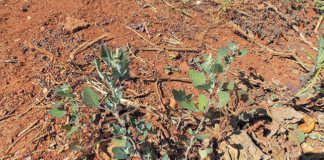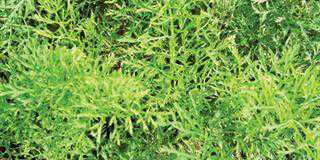This is because ammonia is positively charged, and will attach to negatively charged soil colloids like iron filings to a magnet. This means that most of the ammonia in the soil has to be converted into nitrate before it can move into the soil solution, where it’s easily accessible to the roots.
This is not as much of a problem in hydroponics, where there is no soil. The positively charged ammonia will remain in solution since there aren’t enough negatively charged sites to accommodate it, and it will be freely available to the roots.
However, in soil farming, ammonium sulphate will only be converted to nitrate in 45 to 60 days in warm soil, and much longer in cool soil.
When the soil temperature drops to 10ºC, conversion stops altogether as the bacteria which perform it stop functioning. It won’t start again until the soil warms up in spring. In turn, plants convert the nitrate they take up back into a form of ammonia. On a number of occasions I’ve been called out by farmers in winter who claim to have a mineral deficiency they can’t quite identify.
When I look at the crop it’s clear it’s a nitrogen deficiency, but they’ll argue that’s impossible – they’ve put down vast quantities of nitrogen. When I ask what type of nitrogen they used, it’s always an ammonia form. This has happened quite a few times in summer as well, when the farmer does not realise the time lag between its application and availability.
Use the right fertiliser combo
Many fertiliser experts, including one respected institution, advise using ammonium sulphate on vegetables when the soil pH is a little on the high side. I have literally seen millions of rand lost in reduced production on account of this advice.
American agronomists such as Gary Zimmer and Neal Kinsey promote ammonium sulphate, but they have good reason to do so. They refer to agronomic crops like maize and wheat, but also caution that the application must be carefully timed. It must often be done before planting to coincide with the plants’ maximum and strategic requirement for nitrogen.
Neal Kinsey also advises using ammonium nitrate if extra nitrogen is required at a later stage, knowing that ammonia alone would kick in too late to help the situation. It’s a different ball game with vegetables, especially when applied halfway through the crop’s development. In cool regions we often find symptoms of low nitrogen on our crops, even thought we’ve kept up the same top-dressing regime we’ve been following throughout summer.
But if we’ve only used ammonia fertilisers, no more nitrogen will be made available in winter. Where ammonium nitrate has been used, only the nitrate portion will work, while the ammonia waits in reserve for warmer days. This has to be taken into account when in or approaching winter. When confronted with a nitrogen deficiency in winter in cool areas, it may pay to use other nitrate fertilisers like potassium nitrate or calcium nitrate, in which all the nitrogen is in an available form. It will help you decide if either calcium or potassium could benefit the crop at the same time.
Low-biuret urea could also be used as a foliar spray to speed things up. Such alternatives are an extra expense, but could still be more economical with vegetables than investing in ammonia, which may not benefit the given crop when needed.













